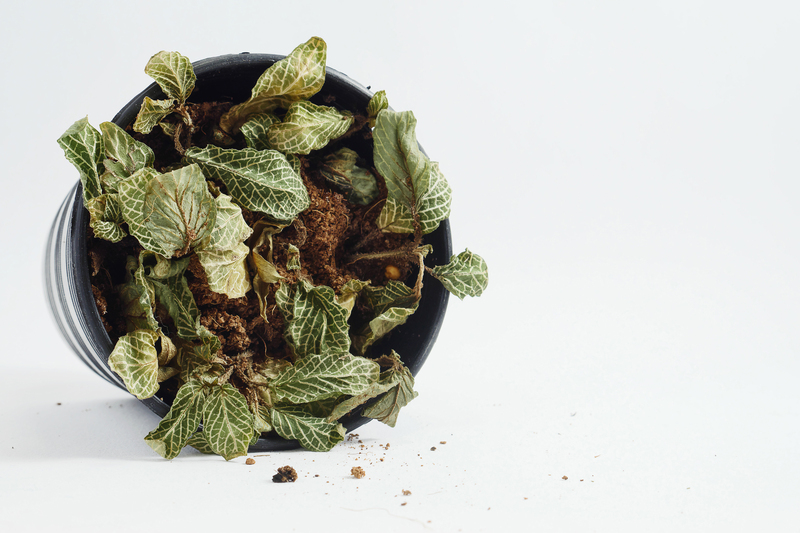How to Transform Your Garden into a Winter Haven
Posted on 16/09/2025
How to Transform Your Garden into a Winter Haven
As the chilly months approach, most gardeners pack away their tools and bid farewell to their outdoor spaces. Yet, your garden doesn't have to be abandoned until spring. With thoughtful planning and design, you can transform your garden into a winter haven--a magical, inviting space that defies the season's bleakness. Discover how to breathe new life into your landscape and enjoy outdoor serenity even when temperatures drop.
Why Create a Winter-Friendly Garden?
Many overlook the potential of a winter garden, believing that frost and snow mean the end of vibrant landscapes. However, winter gardens offer a tranquil escape, showcasing the elegant beauty of snow-dusted branches, evergreen hues, and crackling fires. Additionally, transforming your garden for winter:
- Encourages wildlife with shelter and food sources
- Extends outdoor living and social time
- Adds curb appeal and structure to your property
- Improves mental well-being through year-round nature contact
The Key Elements of a Winter Haven Garden
To successfully turn your garden into a winter retreat, consider these essential features:
- Weather-resistant plants and evergreens for structure
- Lighting and warmth to combat early nights and cold
- Textural and color contrasts to enliven winter monotony
- Hardscaping and garden structures for functionality
- Wildlife-friendly additions to attract birds and animals
- Cosy seating areas for relaxation

Step 1: Select Winter-Interest Plants
Choosing the right plants is fundamental for creating a winter garden oasis. While many plants go dormant, numerous varieties provide color, texture, and shape to brighten up the dull days.
Evergreens for Structure and Color
Evergreens are the backbone of any winter garden. Their resilient foliage provides structure and color throughout the coldest months. Consider:
- Conifers, such as pine, spruce, and fir, for sculptural shapes
- Holly (Ilex) for glossy leaves and festive red berries
- Boxwood (Buxus) for formal hedges and topiaries
- Mahonia, whose jagged leaves and yellow flowers bring vibrancy to grey days
Add Texture with Bark and Stems
Reveal unexpected beauty in your winter landscape by selecting plants with interesting bark or colorful stems:
- Cornus alba (Red dogwood) with vivid red stems
- Betula (Birch) and Acer griseum (Paperbark maple) for eye-catching peeling bark
- Sambucus for black stems and feathery leaves
Embellish with Winter-Flowering Plants
Certain plants bloom during the darkest months, infusing your winter garden retreat with gentle scent and color:
- Hellebores (Christmas rose) - subtle blooms in pinks, purples, and greens
- Witch hazel - spidery yellow or orange flowers with sweet fragrance
- Winter jasmine - trailing yellow blossoms brightening fences or walls
- Snowdrops and Crocus - early bulbs that break through frost
Plant for Wildlife
To make your garden a haven for birds and small mammals:
- Install berry-producing shrubs like rowan, pyracantha, or cotoneaster
- Grow seed-bearing plants such as sunflowers and teasels
- Avoid cutting back all perennials; their seeds and stems offer food and habitat
- Include dense evergreens for nesting and shelter
Step 2: Introduce Light and Warmth
One of the challenges of winter is shorter daylight hours. Clever lighting and the addition of warmth make your winter garden sanctuary usable and inviting long after sunset.
Outdoor Lighting Ideas for Winter Gardens
Strategic lighting not only enhances safety but also draws attention to your best features. Try these options for a glowing landscape:
- Solar-powered lanterns and string lights woven through trees or pergolas
- Outline paths with LED stake lights for safe navigation
- Highlight specimen plants or sculptures with uplighters
- Install motion-sensor lights for convenience and security
Cosy Outdoor Heating Solutions
A little heat goes a long way in transforming your winter garden into a social retreat. Consider:
- A fire pit or chiminea for instant warmth and ambience
- Patio heaters (electric or gas) to extend seating comfort
- Heated benches or hot water bottles in cushioned seating
- Blankets stored in weatherproof boxes for guests
Step 3: Add Colour and Contrast
Don't let winter's grey palette dominate your garden. You can inject contrast and vibrancy with creative planting and accessories:
Decorative Containers and Planters
Use weatherproof containers filled with dwarf evergreens, winter pansies, cyclamen, and trailing ivy near doorways or seating areas for pops of color and interest.
Garden Art and Ornaments
Select frost-resistant statues, glass globes, or brightly painted birdhouses to punctuate your winter garden design. Metallic finishes catch low sunlight for sparkling effects.
Mulches and Decorative Gravel
Brighten beds by covering soil with decorative mulch, colored gravel, or white pebbles--these reflect light and create a crisp look even in the depths of winter.
Step 4: Design for Structure and Shelter
Thoughtful hardscaping helps frame your winter garden retreat and enhances practicality.
Arbours, Pergolas, and Fencing
Install structures as windbreaks and visual anchoring points. Pergolas can support fairy lights or climbing winter-flowering plants. Painted fences add background color.
Paths and Paving
Ensure paths are safe and slip-resistant for winter conditions. Use gravel, textured pavers, or bark chip. Curved paths create inviting movement through the garden.
Covered Seating Areas
A sheltered bench, gazebo, or canopy lets you savour the view and fresh air while protected from sleet and wind. Furnish with waterproof cushions and a throw for comfort.
Step 5: Attract and Support Local Wildlife
Transforming your garden into a winter wildlife sanctuary benefits the environment and brings life to your landscape. Here's how:
- Install bird feeders and regularly top them with high-energy foods like sunflower seeds, suet, and mealworms.
- Add a heated birdbath or check that unfrozen, shallow water is available for drinking and bathing.
- Provide bug hotels, log piles, or compost heaps for overwintering insects and hedgehogs.
- Keep access routes open in and out of your garden for small mammals like hedgehogs and frogs.
- Choose native plants to support your local wildlife ecosystem all year.
Step 6: Embrace Winter's Sensory Delights
A winter garden haven is about more than visuals. Invite multisensory pleasure into your landscape:
- Plant fragrant shrubs like sweet box (Sarcococca) and Viburnum bodnantense near paths where you can smell them as you pass.
- Select grasses and bamboo to rustle in the cold wind, adding soothing sound.
- Arrange reflective elements like mirrors or water bowls to catch and in crease winter sunlight.
- Encourage birdsong with habitat and feeders.
Step 7: Practical Tips for Winter Garden Maintenance
Maintaining your transformed winter garden retreat ensures it remains beautiful and functional even during harsh weather.
- Check structures like pergolas, greenhouses, and sheds for weatherproofing and stability
- Clear snow from paths and salting any icy areas to prevent falls
- Prune shrubs and trees for shape, removing broken or diseased branches
- Mulch around plant bases to insulate roots from frost
- Assess potted plants--move less hardy specimens under cover
Step 8: Enjoying Your Winter Garden
Don't let cold weather keep you indoors. Turn your transformed winter haven garden into a personal retreat or a gathering place for friends and family. Host a fire pit evening, hot chocolate social, or simply bundle up with a blanket and watch wildlife as snow falls. A well-designed winter landscape will provide joy and beauty even on the gloomiest days.

Frequently Asked Questions
How do I protect delicate plants in my winter garden?
Cover sensitive plants with horticultural fleece, bubble wrap, or move pots close to walls for added warmth. Apply mulch liberally to protect roots.
What are the best winter plants for small gardens?
Dwarf conifers, hellebores, snowdrops, pansies, and ornamental grasses all work well in compact spaces and containers.
Can I still garden in snowy climates?
Absolutely! Winter gardens in snowy regions can feature dramatic forms, evergreens, decorative barks, and dazzling lights that look especially magical against snow cover.
Conclusion: Create Your Tranquil Winter Escape
With a little imagination and planning, it's easy to transform your garden into a winter haven. Celebrate the unique beauty of the season with resilient plants, thoughtful design, creature comforts, and a welcoming setting for wildlife and people alike. Your winter garden will soon become a cherished space for relaxation, reflection, and outdoor enjoyment, making every frosty day a new adventure.
Ready to embrace winter outdoors? With these comprehensive ideas and maintenance tips, your garden will become a peaceful, winter retreat that provides inspiration and comfort all season long.

